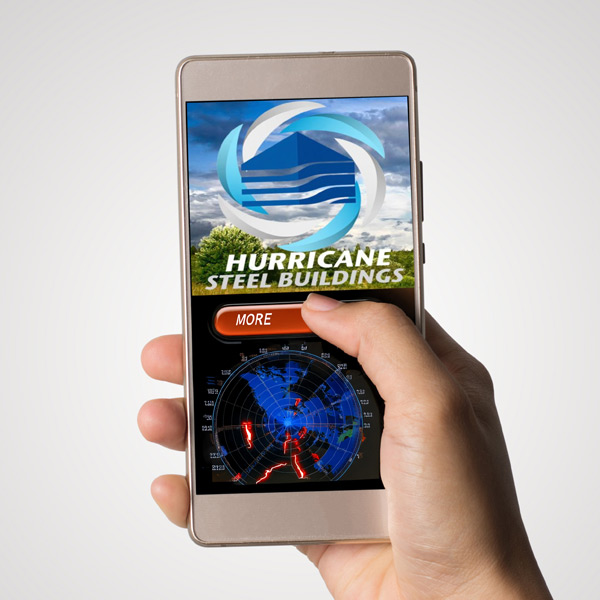Case Study: Emergency-Ready Marketing Campaign for a Building Parts Supplier
In fall of 2022, Hurricane Ian posed a major threat to the southeast United States, particularly Florida, Georgia, and the Carolinas. In anticipation of the damage the storm would likely cause, Epic Marketing developed a Google Ads campaign designed to assist a client—an industrial building parts manufacturer and supplier—to quickly connect with businesses and help their recovery processes. By using Google’s Responsive Search Ads and strategically targeting areas affected by the storm, the campaign achieved impressive results, exceeding client expectations and solidifying the value of emergency-ready marketing strategies.
Research
Picture this: A formidable force of nature approaches, leaving businesses contemplating the costly and urgent need to replace walls, roofs, and other parts of their structures, in the immediate aftermath.
Following a natural crisis, it can be difficult to know exactly who to turn to for help. This is where strategic marketing can make connections and make lives easier. But, in the case of one building parts supplier during Hurricane Ian, planning ahead ensured builders were able to easily find and connect with the right resources.
Epic Marketing routinely manages search engine marketing for a branded industrial building parts manufacturer and supplier. The client’s branded buildings are located across the country and are often used as warehouses and for other industrial purposes.
Recognizing that an extreme weather event like a hurricane would likely lead to affected businesses needing to replace walls, roofs, and other parts of building structures, the Epic team prepared a Google ad campaign using responsive search ads for the client. Prior to launching the campaign, Epic Marketing conducted research to identify relevant keywords related to building repair and restoration. The team used variations of the client’s keywords and phrases for those building parts, like walls and roofs, most likely to be damaged in a hurricane. This research informed the ad copy and targeting parameters, ensuring that the ads would reach the most relevant audience.
Planning
Recognizing the urgent need for building repair and restoration services in the aftermath of Hurricane Ian, the SEM team at Epic Marketing planned a Google Ads campaign that would strategically target businesses in affected areas. Epic Marketing stayed in contact with the client, as well as monitored local and national weather news to stay current on the developing situation and proceed appropriately. The campaign was designed to launch immediately following the hurricane, capitalizing on the heightened demand for building parts and supplies.
Goals
The primary goals of the campaign were to:
- Increase brand awareness for the building parts manufacturer and supplier
- Generate leads by driving traffic to the client’s website and encouraging quote requests
Benchmarks for Success
- Number of ad clicks
- Number of impressions
- Amount spent on the campaign
- Number of quotes requested/given
Target Audience
The target audience for this Google Ads rebuilding campaign included:
Businesses in areas directly impacted by Hurricane Ian
Individuals with homes in areas directly impacted by Hurricane Ian
Those who had experienced property damage and were seeking to rebuild or repair their structures
Strategy
To maximize ad relevance and effectiveness, it is crucial to provide the maximum allowable number of headlines and descriptions. This enables Google to generate ads that more precisely align with potential customers’ search queries.
RSAs permit the inclusion of up to 15 headlines and up to 4 descriptions. Each ad presented to users typically comprises three headlines and two descriptions.
A key advantage of RSAs is the advertiser’s comprehensive control over all potential headlines and descriptions for each campaign. Furthermore, Google’s extensive insights into user behavior and search trends significantly enhance the likelihood of successful ad performance.
The strategic approach focused on leveraging Google’s Responsive Search Ads to develop and refine a targeted advertising campaign. This methodology, which allows for numerous variations of ad copy, empowers Google’s algorithm to serve the most impactful combinations to users, thereby optimizing ad relevance and engagement.
Execution
The campaign unfolded in two successful phases. Phase 1, launched October 3 and concluding October 10, strategically coincided with the immediate aftermath of Hurricane Ian. This initial phase garnered 374 clicks, 7,887 impressions, with a spend of $1,580.31.
Due to its impressive results, the client requested an extension, leading to Phase 2. This extended phase ran from October 13 to October 31, achieving 559 clicks, 11,233 impressions, and a spend of $1,560.91. The client’s satisfaction with these outcomes further led to a request for an additional two-week extension


Messaging
The ad messaging focused on the urgency of post-hurricane reconstruction and the client’s ability to provide the necessary building parts and supplies. The messaging also emphasized the client’s expertise and reliability in assisting with the rebuilding process.
Key Tactics
Thorough keyword research was conducted to identify relevant search terms used by individuals and businesses seeking building repair and restoration services.
Google Ads were strategically targeted to geographic locations most affected by Hurricane Ian, ensuring that the ads reached those most in need of the client’s products and services.
By using Responsive Search Ads, the campaign leveraged Google’s machine learning capabilities to dynamically serve the most effective ad variations, optimizing for clicks and conversions.
Launching the campaign immediately after Hurricane Ian ensured that the ads reached the target audience when they were actively searching for building parts and supplies.
Evaluation
In the short time the campaign was active, the Google Ads achieved significant success across both phases. The first phase of the campaign established a strong foundation for success. It meticulously tracked and optimized performance metrics, resulting in:
374
clicks
indicating a strong initial engagement with the campaign’s messaging and calls to action
7,887
impressions
ensuring a broad reach and visibility to the target audience during a critical period
$1,580
Spend
An efficient allocation of resources, with the investment for this phase totalling a modest amount

Snaps
The client was so thrilled with the outcome that they sought to extend the campaign for an additional two weeks. So, building upon the momentum of Phase 1, the second phase of the campaign demonstrated even greater traction and efficiency, reflecting continuous optimization and refinement. Key performance indicators for Phase 2 included:
Clicks:
A notable increase in engagement was observed, with 559 clicks generated, showcasing enhanced effectiveness in driving user interaction.
Impressions:
The campaign further expanded its reach, achieving 11,233 impressions, indicating a wider audience penetration.
Spend:
Remarkably, this increased performance was achieved with a slightly reduced expenditure of $1,560, highlighting improved cost-efficiency.
Results
The tangible results of the campaign were immediately evident in the client’s business operations. They reported a substantial surge in quote requests, a direct indicator of heightened consumer interest and demand for their services. This uptick in inquiries translated into a significant increase in overall business activity, validating the strategic approach of the emergency-ready marketing efforts. In the client’s own words: